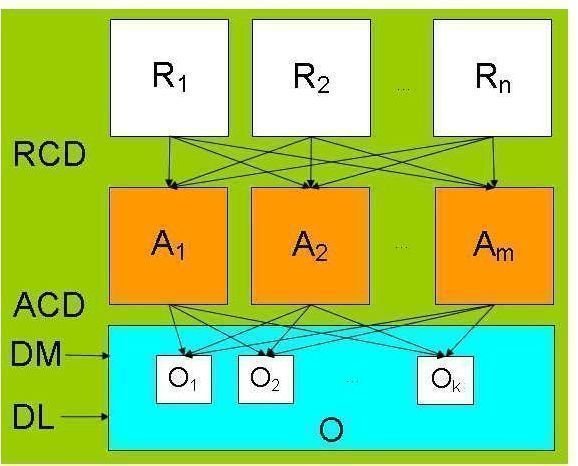What is the Difference Between Absorption Costing vs Activity Based Costing?
**
Absorption costing or full costing fixes the cost of a finished unit in inventory as the sum of cost of direct materials, wages of direct labor, and both variable and fixed manufacturing overheads.
Cost of a product unit under absorption costing = cost of direct materials + direct labor + variable manufacturing overheads + (fixed manufacturing overhead costs/units produced).
<strong>Activity-based costing</strong> (ABC) identifies activity centers in an organization and assigns costs to product units based on the number of activities used by each product unit. ABC ascertains the purpose of each activity or service and assigns the cost of such activity or service to the product or service unit that demands such activity.
Image Credit: Wikimedia Commons
Difference in Approach
The major difference between absorption costing vs. activity based costing is the approach. Absorption costing allocates costs to product units, whereas activity based costing traces the costs of product units.
Absorption costing is the traditional cost accounting method that focuses on the product or service when fixing costs. It works under the simple approach of assigning resources to products or services directly.
Activity based costing is a modern cost accounting approach that focuses on activities as the fundamental cost. ABC presumes that products or services consume activities, and activities consume resources. It thus, works to convert indirect costs into direct costs.
Difference in Methodology
Absorption costing divides equally the fixed overhead costs with the number of product units whereas activity based costing identifies the actual proportion of fixed overheads costs incurred by the product unit.
Comparing absorption costing vs. activity based costing, the latter follows a more scientific approach. Price fixation in absorption costing depends on the inventory. The higher the inventory, the lower the product cost and lower the inventory; or the higher per-product cost. Price fixation in activity based costing bases calculations to derive the actual overheads incurred on a unit, and does not vary with change in inventory levels.
Activity based costing, however, faces serious challenges in practical application, for appropriating some of the fixed overheads such as the chief executive’s salary on a per-product usage basis, is next to impossible. Moreover, process of data collection, data entry, and data analysis required to divide the fixed overhead costs among units based on usage, requires substantial resources and remains costly to maintain. Absorption costing that divides all fixed overhead costs with the number of units produced is a simple and easy approach and free from such complexities.
Legal Validity
Absorption costing complies with the generally accepted accounting principles (GAAP) whereas the Financial Accounting Standards Board (FASB) and Internal Revenue Service (IRS) do not accept ABC for externally published financial statements. Firms that follow activity based costing, therefore, need to maintain two cost systems and accounting books, one for internal use, and another for external reports, filings, and statutory compliance.
Difference in Scope
Absorption costing helps ascertain the overall profitability or efficiency of the manufacturing system but fails to provide the real cost of individual product units.
Activity based costing mirrors the functioning of the enterprise and contributes to strategic decision-making processes. ABC provides the real cost of individual product units and, thereby, helps identify inefficient or non-profitable products that eat into the profitability of other highly profitable products. ABC also helps price products equitably, allowing breaking down of product or service into sub-components or offering “top ups” based on customer needs.
Comparing absorption costing vs activity based costing, activity based costing improves the quality of management accounting information, especially in large and multi-product operations where conventional overhead allocation methods such as absorption costing may produce misleading results. Absorption costing, however, remains more suitable for small firms and enterprises with homogeneous products or services.
